What Does Rutabaga Taste Like?
You plan to eat rutabaga to support weight loss but do not know what does rutabaga taste like? This article will help you find the answer to see if it is suitable for your eating preferences.
Besides beetroot or white turnip, rutabaga is also a plant that brings many benefits to human health. So what is a rutabaga? Explore all aspects of this interesting vegetable with me!
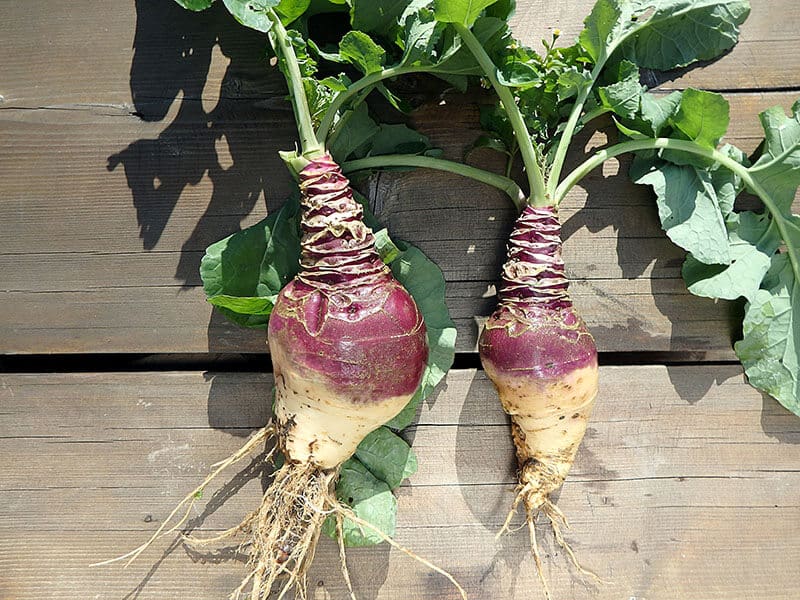
What Is Rutabaga?
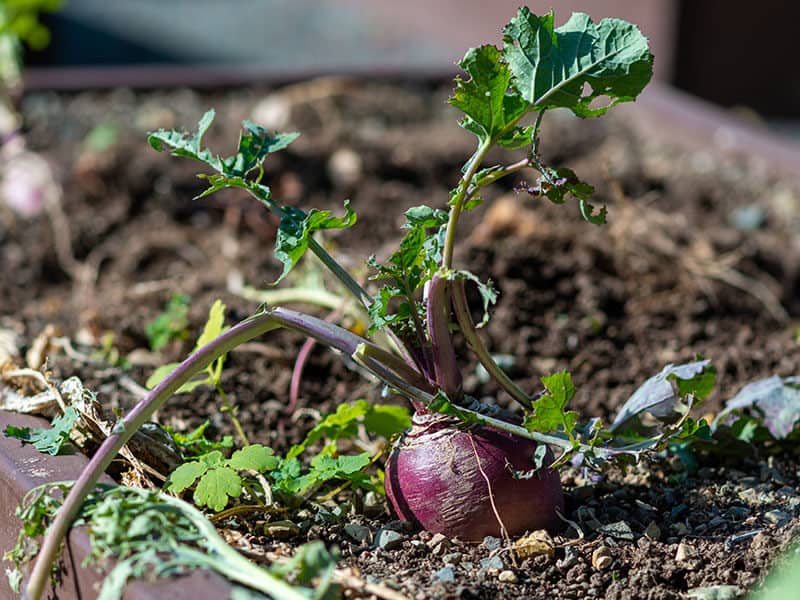
Rutabagas (also known as Swedish turnip) is a root vegetable of a hybrid of cabbage and turnip, belonging to the genus Brassica of the plant (scientific name: Brassica napus var. napobrassica) (1).
They have golden brown or purple skin and yellow pulp. This used to be the main dish in Northern European cuisine. Today, rutabagas are popular ingredients in the cuisine of many countries around the world, such as China, Japan, India, Scandinavia, Europe, the UK, and the US.
Not only does it taste good, but this vegetable also contains a high nutritional value, good for health. Rutabagas are popular due to their extremely high antioxidant content.
Furthermore, rutabagas are considered a dietary product. The unique feature of this root vegetable is that you can eat it in any form: raw, sautéed, steamed, boiled, etc.
Let’s learn some rutabaga facts and healthy recipes!
What Do Rutabagas Taste Like?
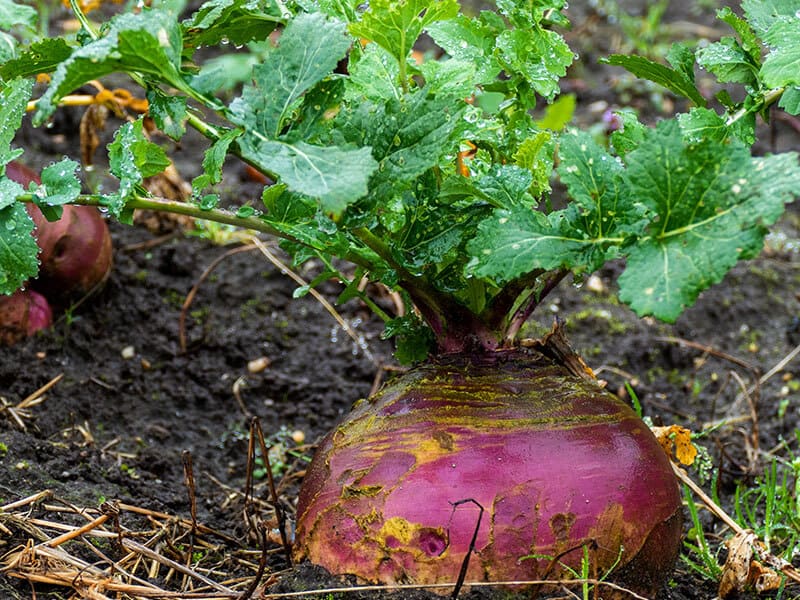
Rutabagas are spherical in shape. Depending on growing conditions, its shape can be slightly elongated or sometimes quite round. When you cut it out, the pulp inside is slightly yellowish-white, and that’s also the part you should taste.
The pulp of this root vegetable has a savory-sweet taste with some hints of bitterness. You can say that its flavor is a cross between turnip and cabbage, a slightly earthy and piquant touch.
The skin of this root vegetable is usually half purple at the top, and the other half is yellowish-white. Eating the raw rutabaga will feel pretty mild, acrid, with a crispy texture.
It can be said that its taste is quite similar to turnip, but with a bit of signature sweetness similar to carrot and a tiny bitterness added. It also has the faint taste of cabbage because it belongs to this family. However, some people consider it a bit bitter and difficult to eat.
Do not worry! Because rutabagas, after being cooked, are so buttery, savory, and peppery, almost losing all their bitterness. The important thing is that it still retains your favorite crunchy texture. After cooking, it tastes like the richest potatoes yet less starchy.
Moreover, you can also enjoy the rutabaga leaves since their flavor is interesting too: peppery and mustardy with a significant bitter aftertaste of rutabaga. These leaves work well in soup and stew. Just note that you should remove the stem due to the fibrousness.
Rutabaga goes well with any preparation method and ingredient, whether meat, fish, cabbage, potatoes, milk, cheese, honey, nuts, and fruit. Many people love to enjoy the raw slices of rutabaga on top of their salads.
Turnip Vs. Rutabaga: Which Tastes Better?
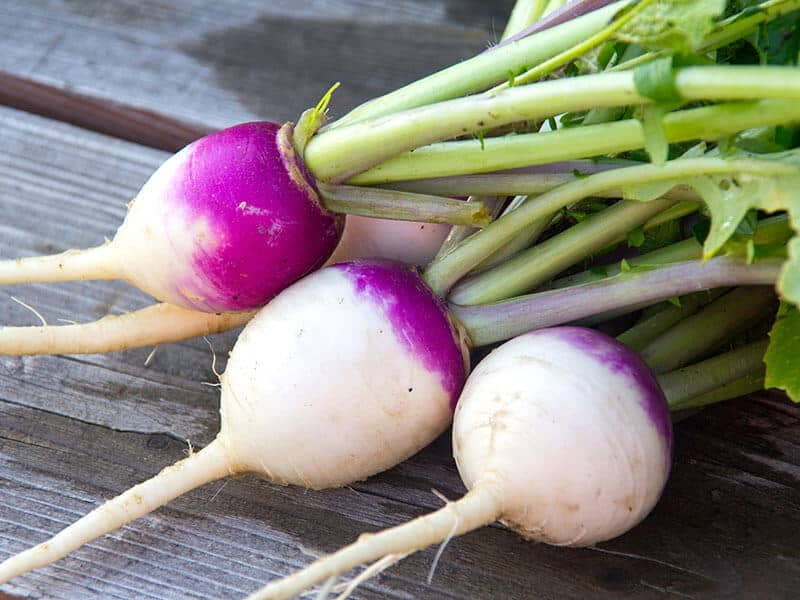
You probably still do not know the difference between turnip and rutabaga, as well as how their flavors are distinguished. Turnip and rutabagas are often confused with each other because they taste nearly the same.
They are both members of the cabbage family, and rutabaga is a cross between turnip and cabbage. Although very similar, they also have certain differences that you need to know.
In appearance, turnips are much smaller than rutabaga. Turnips usually have a white to purple tint, while rutabagas usually have a yellowish-white mixed purple skin. The inside of the turnip is pure white, but the rutabaga has prominent yellow flesh.
Turnip isn’t as sweet as rutabaga when cooked in stews or soups, but it won’t be as bitter either. Turnip is also a bit spicier than rutabaga. However, they all have a relatively crispy and attractive texture. Boiling, mashing, or stewing turnip and rutabaga is also a good cooking trick.
Let’s refer to the comparison table below for a clearer view:
Nutrition Content and Health Benefits of Rutabagas
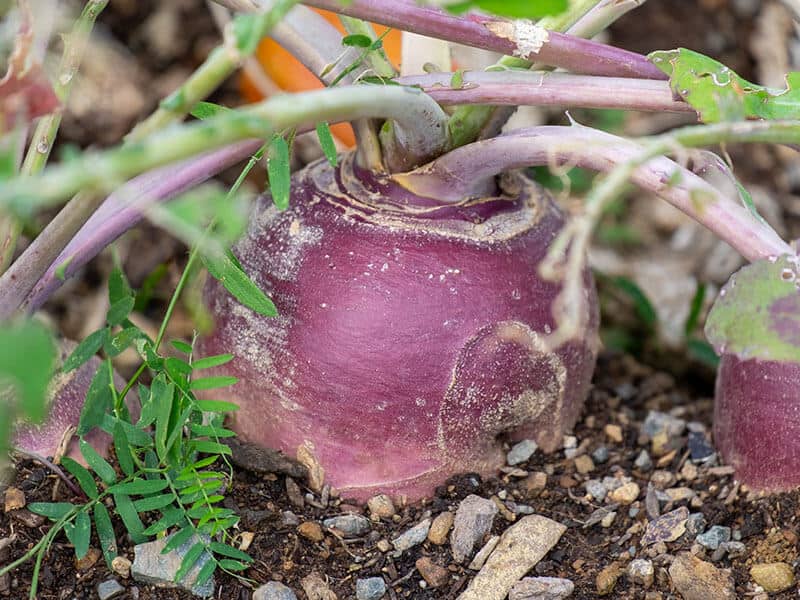
In 386g, rutabagas contain 143 calories, and the nutritional components are as follows:
- Protein: 4g
- Carbs: 33g
- Fat: 0.5g
- Fiber: 9g
- Vitamin C: 107% DV (Daily Value)
- Vitamin E: 7% DV
- Potassium: 35% DV
- Magnesium: 18% DV
- Calcium: 17% DV
Here are the health benefits from rutabagas that are supported by scientific studies.
Strengthen The Immune System
The effective vitamin C (2) content in rutabagas helps strengthen the immune system by stimulating the immune system to produce white blood cells, preventing the risk of infectious diseases and infections.
In addition, vitamin C in this turnip also improves lung infections, fever, cough, and diarrhea.
Stabilize Blood Pressure, Good For The Heart
The abundant potassium in rutabagas helps regulate blood flow, reducing tension and spasms in blood vessels. From there, stabilize blood pressure for the body.
In addition, potassium and fiber in this vegetable also help balance cholesterol and prevent many cardiovascular diseases.
Provides Antioxidants
Rutabagas contain many powerful antioxidants such as vitamin C, vitamin E, and glucosinolate. These substances help protect the body against the risk of dangerous diseases.
Vitamin C helps neutralize free radicals in the body, thereby preventing or slowing cell damage. In addition, vitamin C also works to enhance resistance, promote iron absorption and collagen synthesis for the body.
Vitamin E helps maintain healthy cells and fights cell damage, slowing down the aging process and reducing the risk of chronic diseases.
Help Strengthen Bones
Rutabagas contain several essential minerals such as zinc, calcium, magnesium, manganese, and phosphorus.
These play an essential role in building and maintaining bone structure, making bones strong, and preventing osteoporosis effectively.
Enhance Enzyme Function
Not only rich in potassium, but rutabagas also contain a lot of zinc. This is an essential mineral for the activity of more than 300 enzymes with many different functions such as digestive support, vision, nerves, etc.
Zinc deficiency can impair enzyme function, causing worrisome problems such as impaired vision, poor digestion, bone and joint effects, and some chronic diseases.
Good For Gut Health
Rutabagas are an excellent source of dietary fiber. This is beneficial for your gut.
Most of the fiber in this rutabaga is insoluble fiber, which helps promote intestinal peristalsis, increasing the production of beneficial bacteria, thereby improving the health of the digestive system and preventing intestinal problems such as constipation, diarrhea, flatulence, etc.
Effective Weight Loss Support
Rutabagas contain low calories and are rich in nutrients and fiber, so it is suitable to add to the diet menu for people in weight control.
Consuming an abundant amount of fiber makes you feel full for longer. From there, limit the intake of extra food and effectively lose weight.
Moreover, this compound also increases the beneficial bacteria in the gut. This has been linked to the long-term prevention of weight gain.
Rich In Potassium
Like green vegetables and fruits, rutabagas are also rich in potassium. This is an essential mineral, helping to balance fluids, regulate blood pressure and maintain typical cardiovascular, digestive, and urinary systems.
Many studies have proven that a diet rich in potassium reduces the risk of stroke, high blood pressure, and heart-related diseases.
Good For Diabetics
Compared to potatoes, rutabagas contain fewer carbs. Therefore, it becomes an ideal food to add to the diet menu for people with diabetes.
A low-carb diet helps balance blood sugar and prevents the development of type 2 diabetes.
Moreover, rutabagas contain many rich vitamins and minerals, which help provide complete nutrition and promote health for diabetics.
Reduce The Risk Of Cancer
One of the significant effects that rutabagas bring to your body is to help prevent cancer effectively.
The glucosinolate compound in this turnip has antioxidant properties, which help slow down the growth of cancer cells, thereby protecting the body against the risk of dangerous cancers such as lung cancer, prostate cancer, and gastrointestinal cancer.
Helps Prevent Aging
Antioxidants in rutabagas not only help prevent disease but also prevent aging effectively.
Vitamin C present in this turnip works to protect your skin against environmental damage and UV rays. It also promotes collagen synthesis, making the skin healthy, firm, and smooth.
Provides Complete Protein Intake
Rutabagas are a comprehensive protein source containing nine essential amino acids that the body cannot synthesize independently. Therefore, it is perfect for your body, especially vegetarians.
Consuming this protein content helps maintain and develop muscle mass, boosts metabolism, and many other vital processes in the body.
Improve Mood
Rutabagas contain a large amount of vitamin B6 – a substance that plays a vital role in regulating brain hormones and has a positive effect on neurotransmitters. From there, it helps to improve mood effectively.
A study proved that: supplementing with vitamin B6 found in rutabagas improves mood, relieves pain, and increases the concentration of patients with brain problems due to lack of neurotransmitter nerve function.
Useful Method To Choose The Fresh Rutabagas
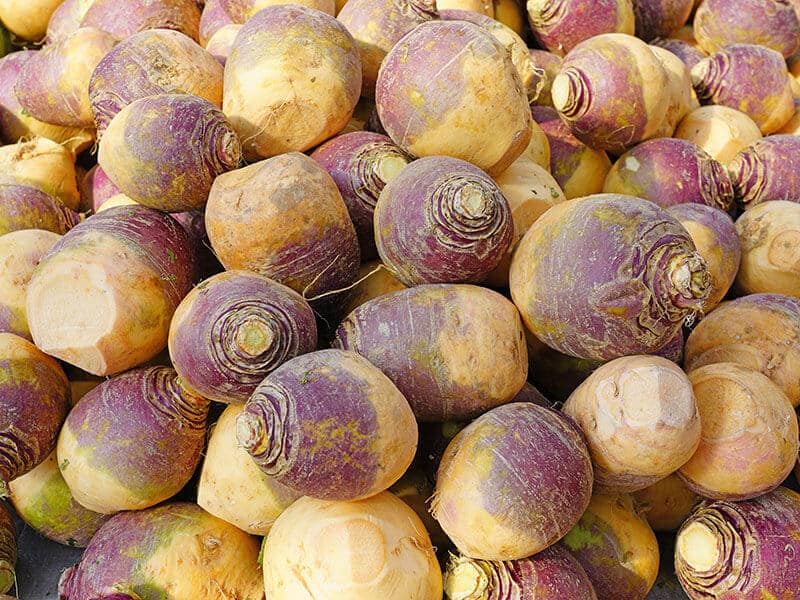
To make the most delicious dishes, it is crucial to choose the suitable main ingredient – rutabagas. It should be firm, smooth, and free of dents. If rutabaga has green leaves on top, they should be green and fresh.
By weight, root vegetables that are too light may indicate hollow inside. The root vegetable should have an even shape and, when picked up, should feel heavy for its size. Therefore, when choosing the store, you should hold the root vegetables and evaluate their weight.
Besides, tiny cuts around the stem and top may not affect the quality of the rutabagas, but you should avoid major damage to the surface of the skin.
Moreover, you should also consider choosing smaller rutabagas (about 4 inches or less) because vegetables that are too large are often not as sweet.
How Do You Keep Rutabagas Fresh?
To keep your rutabaga fresh, sweet and juicy for as long as possible, you should follow these useful storage tips:
- Cut off the stem and leaves, so they do not absorb all the moisture
- Wrap rutabagas in a plastic bag or put them in the container with an airtight lid
- Store in a cold place, away from direct sunlight and moisture
- Do not keep rutabaga near meat and juicy meat as it can be contaminated with bacteria
- Keep the rutabagas in the refrigerator to keep for 2 to 3 weeks
- Keep the rutabagas in the freezer to save for 10 months
- If stored at room temperature, rutabagas will stay fresh for up to 1 week
How To Tell If Rutabaga Has Gone Bad?
There are several signs of spoilage that you can check before you buy rutabagas or after they have been stored for a while to get the best taste:
- Soft Texture: Rutabagas usually have a very dense and hard texture. When they are about to spoil, they will turn soft and even mushy. So hold them in your hand and squeeze them to see if they’re still fresh.
- The Appearance of Mold: In rutabagas, mold will form when root vegetables are damaged. It can be black spots or gray spots. When you see this phenomenon, you should not use those rutabagas anymore.
- Unpleasant Odors: It’s time to throw out rutabagas if they start to give off a strong and unpleasant odor.
Effective Tips To Serve Rutabagas
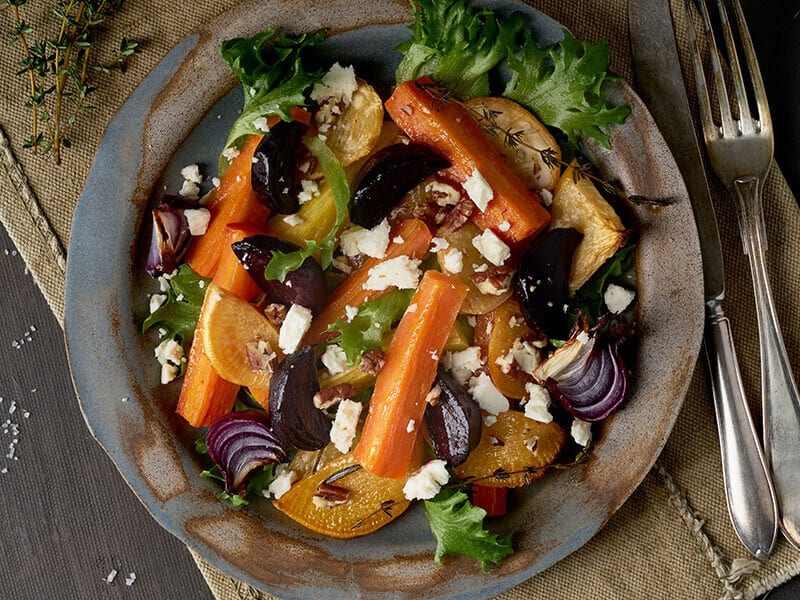
There are many ways to serve rutabaga because it is delicious in most cases. You can prepare and serve it as:
- A low-carb alternative to potatoes
- A hearty side dish for a dinner party
- A quick stunning snack
- A significant component in salads
- An accompaniment to meat, fish, or chicken
- A perfect ingredient for cereal and vegetable bowls
- An excellent addition to soups and stews
How To Prepare Rutabaga Properly?
To retain the characteristic sweetness of rutabaga after cooking, you must pay attention to how it is prepared before cooking. Here are some helpful tips:
Clean Off The Wax
When first buying rutabaga from the store, it is usually covered with wax outside the skin. This waxy layer can be sticky, unpleasant with a slightly unpleasant taste. You can remove the wax before peeling the rutabaga, and it is not difficult.
To easily remove the wax from the rutabaga, you need to soften the wax first by placing it under warm running water and waiting some minutes.
You can then use the dull side of a knife or a spoon to slowly scrape off the wax. You can also use a vegetable brush to clean off all the wax under the running water. Finally, rinse the rutabaga until it is no longer greasy; dry with a towel.
Peel The Skin
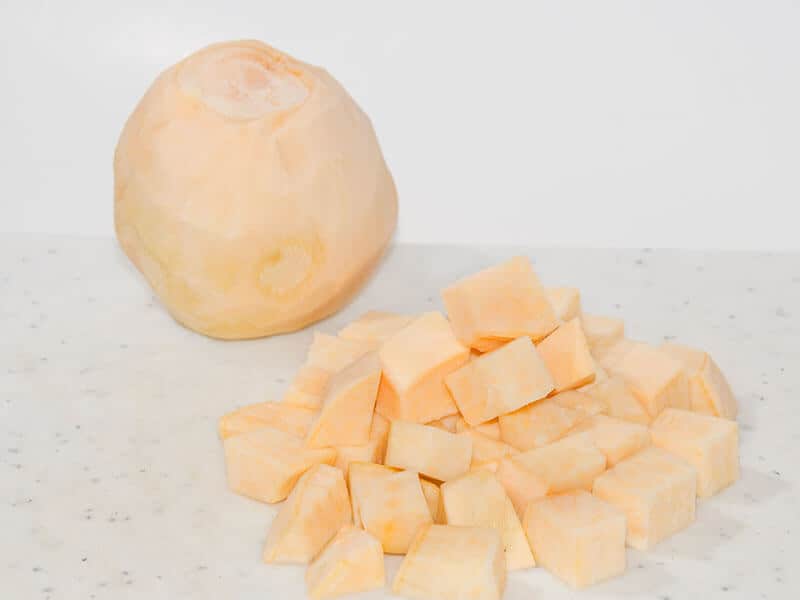
You can eat the rutabaga skin, as it is inherently edible and non-toxic. However, many people will not like its bitter and robust flavor. Even the old rutabagas can have bruised skin and rough skin.
Therefore, you should peel the rutabaga first. Actually, it is so easy to peel off. Just use a paring knife and work like you would with other root vegetables.
Slice Into Small Pieces
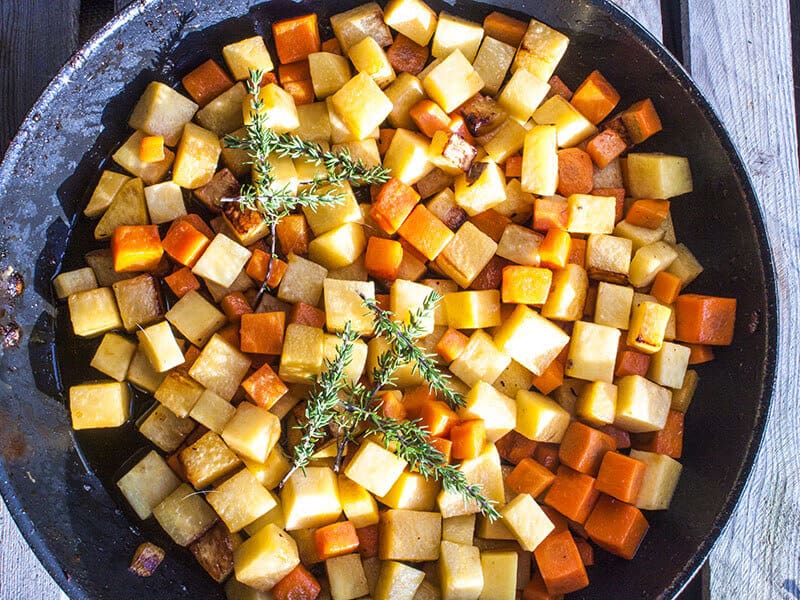
After peeling, you can proceed to slice. With rutabaga, you should not cut it into large pieces because it is relatively dense and hard. Do not start by slicing the rutabaga in half since your knife can get stuck.
To make the cut most accessible, start by dividing the rutabaga into small portions. Then continue to cut bite-sized pieces. Note that these pieces should not be too small as they will lose the characteristic crispiness of rutabaga.
Find out the best method to peel and cook rutabagas!
3 Stunning Rutabaga Cooking Ideas You Must Try
Simple recipes for rutabagas will diversify your diet and make it healthier. Take a look and decide to make one this weekend!
Mashed Rutabagas
Like potatoes, mashed rutabagas are a must-try. This is also the simplest and most delicious way to eat rutabagas. Just don’t grind too smooth to keep the rutabaga flavors. The characteristic sweetness blends with the butter to make an excellent dish.
Roasted Rutabaga
This dish is even simpler to make. With just a little olive oil and salt, you will have a fragrant roasted rutabaga pan. To highlight the sweetness, you can add your favorite aromatic spices.
Try this delicious roasted rutabagas recipe! You can see this video to know more:
Rutabaga Noodles
Rutabaga noodles are incredibly healthy with low carb for weight loss diets. Combine with other vegetables and mix them with your favorite herbs and olive oil to enhance the flavor.
FAQs
Rutabagas have a lot of interesting points that you will definitely want to find out. Discover some more information in the helpful answers below!
Try Some Fascinating Dishes With Rutabagas!
That’s all I want to tell you about rutabagas – special Swedish turnips. It has a characteristic sweet, earthy and bitter taste with a crunchy texture to satisfy your taste buds.
I hope you have gained new knowledge about the taste of rutabagas and have an effective way to prepare them. Don’t forget to leave a comment about how you feel about this vegetable!
References
- En.wikipedia.org. 2021. Rutabaga – Wikipedia.
- DH;, W.E.S.M.S.H., Immune-enhancing role of vitamin C and zinc and effect on clinical conditions. Annals of nutrition & metabolism.

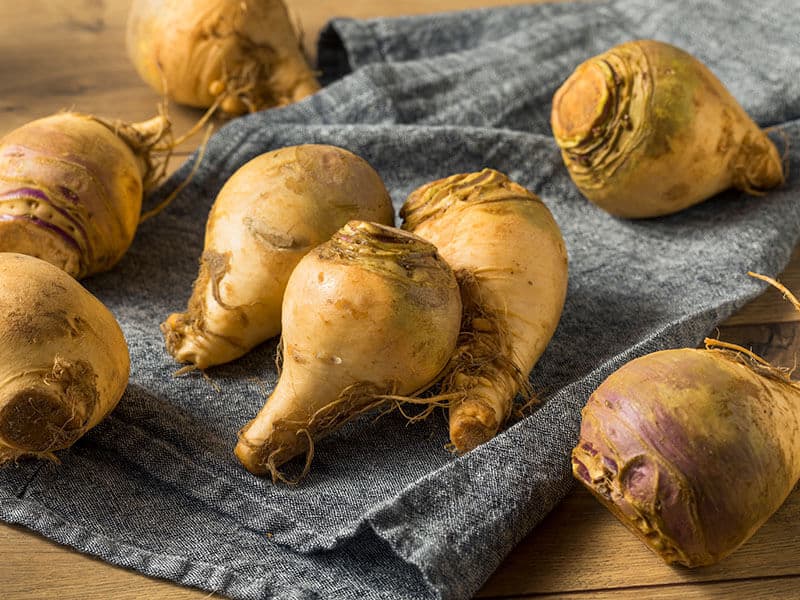
Liam O’Brien
Founder & Recipe Developer
Expertise
Education
Dublin Institute of Technology (now Technological University Dublin)
Ballymaloe Cookery School, County Cork, Ireland
Liam O’Brien is the co-founder and kitchen soul behind Good Tasting Meals, a chef who believes that cooking shouldn’t feel stressful or complicated.
He earned his culinary stripes at Technological University Dublin and polished his farm-to-table skills at Ballymaloe Cookery School. With over 15 years flipping pans and stirring up stories, Liam has worked in family cafés, bustling bistros, and everything in between.
At Good Tasting Meals, Liam brings you recipes that feel like home: cozy, simple, and full of flavor.